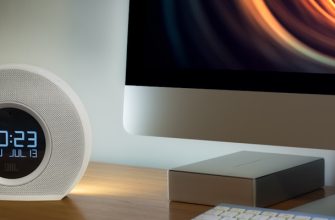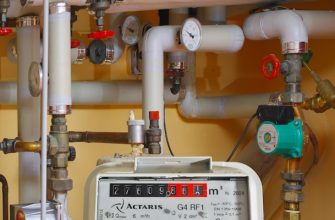- Enhancing Indoor Comfort: The Role of Smart Home Technology
- Monitoring Air Quality: Smart Solutions for a Healthier Home
- Climate Control at Your Fingertips: How Smart Devices Transform Living Spaces
- The Intersection of Smart Homes and Environmental Sustainability
- Real-Time Data: The Key to Effective Climate Management
- Creating a Breathable Environment: Smart Strategies for Air Quality Improvement
Enhancing Indoor Comfort: The Role of Smart Home Technology
Smart home technology plays a crucial role in enhancing indoor comfort by effectively managing climate and air quality. With the integration of advanced systems, homeowners can now enjoy personalized environments that cater to specific preferences and needs. This innovative technology allows for real-time adjustments to temperature, humidity, and air quality, ensuring a pleasant living space throughout the year.
One of the primary benefits of smart home technology is its ability to monitor and control indoor climate conditions. Smart thermostats can learn user habits and optimize heating and cooling schedules, leading to energy savings while maintaining comfort. Additionally, these devices can be programmed to adjust settings based on outdoor weather conditions, ensuring a consistent indoor environment.
- Air Quality Monitoring: Smart air quality sensors detect pollutants, allergens, and humidity levels, providing valuable insights for maintaining a healthy atmosphere.
- Automated Ventilation: Smart home systems can automatically adjust ventilation to ensure fresh air circulation, reducing indoor air contaminants.
- Personalized Settings: Users can set specific preferences for different rooms, allowing for tailored climate control that enhances overall comfort.
Moreover, smart home technology contributes to improved energy efficiency. By automating climate management, homeowners can significantly reduce energy consumption while ensuring optimal comfort. Smart devices can communicate with each other, creating a cohesive system that maximizes efficiency and minimizes waste.
In conclusion, the integration of smart home technology into climate and air quality management is essential for enhancing indoor comfort. With the ability to monitor, control, and optimize environmental conditions, smart homes provide a seamless and efficient living experience. Embracing this technology leads to healthier indoor air quality and greater overall satisfaction in the home.
Monitoring Air Quality: Smart Solutions for a Healthier Home
Monitoring air quality is essential for maintaining a healthy living environment. Smart home technology offers innovative solutions to effectively manage and monitor indoor air quality, ensuring that households are safe and comfortable. By integrating advanced sensors and real-time data analytics, homeowners can stay informed about air conditions and take proactive measures.
- Real-time Monitoring: Smart air quality monitors provide continuous updates on pollutants, allergens, and humidity levels, allowing for immediate action when necessary.
- Automated Alerts: When air quality falls below acceptable standards, smart systems can send notifications directly to users’ smartphones, prompting timely interventions.
- Integration with HVAC Systems: Advanced air quality management systems can connect with heating, ventilation, and air conditioning (HVAC) systems to optimize airflow and filtration based on current air quality readings.
- Data Analysis: Comprehensive reports on air quality trends help homeowners understand patterns and identify sources of pollution, enabling informed decisions about air quality improvement.
Investing in smart air quality solutions not only enhances the comfort of a home but also significantly contributes to the health and well-being of its occupants. With the ability to monitor air quality efficiently, families can breathe easier, knowing that their living environment is continually assessed and improved.
By adopting these smart technologies, households can create a healthier atmosphere that reduces the risks associated with poor air quality. This proactive stance towards air management is crucial in today’s world, where environmental factors increasingly impact health.
Climate Control at Your Fingertips: How Smart Devices Transform Living Spaces
Smart devices have revolutionized the way climate control is managed in modern households. With advanced technology, homeowners can now effortlessly regulate temperature and air quality, ensuring optimal comfort throughout their living spaces. These innovations not only enhance comfort but also promote energy efficiency, leading to significant savings on utility bills.
Smart thermostats, for instance, allow users to program heating and cooling schedules based on their daily routines. This means that the home can be kept at a comfortable temperature when occupied while reducing energy usage during unoccupied hours. Furthermore, many of these devices can be controlled remotely via smartphone apps, providing convenience and flexibility.
- Air Quality Monitors: These devices continuously track indoor air quality, identifying pollutants and allergens. Homeowners receive real-time data and can take measures to improve their air quality.
- Smart Ventilation Systems: Automated ventilation systems work in tandem with heating and cooling units to ensure fresh air circulation. They adjust based on the air quality readings, promoting a healthier environment.
- Integration with Other Smart Devices: Climate control systems can be integrated with other smart home technologies, such as lighting and security systems, providing a comprehensive approach to home automation.
Implementing smart climate control solutions not only enhances living comfort but also significantly contributes to energy conservation. By utilizing smart technology, homes can become more sustainable, reducing their carbon footprint and contributing to a healthier planet.
In conclusion, smart devices have transformed climate control, making it more efficient and user-friendly. With the ability to monitor and adjust temperature and air quality automatically, these innovations create a living environment that is both comfortable and environmentally responsible.
The Intersection of Smart Homes and Environmental Sustainability
The integration of smart homes with environmental sustainability represents a pivotal advancement in modern living. Smart home technology not only enhances convenience but also plays a significant role in promoting eco-friendly practices. By utilizing intelligent systems, homeowners can effectively manage climate and air quality, contributing to a healthier environment.
- Energy Efficiency: Smart homes utilize advanced technologies such as smart thermostats, which optimize energy consumption. This reduces the carbon footprint and lowers utility bills.
- Air Quality Monitoring: Sensors integrated into smart homes continuously track air quality levels. By identifying pollutants, homeowners can take actionable steps to improve indoor air conditions.
- Automated Systems: Smart lighting and heating systems adjust based on usage patterns. This automation not only enhances comfort but also minimizes unnecessary energy expenditure.
- Water Conservation: Smart irrigation systems monitor weather conditions and soil moisture, ensuring efficient water usage. This contributes to sustainable water management practices.
Moreover, the synergy of smart home technology and sustainable practices fosters a lifestyle that prioritizes environmental consciousness. As more homeowners adopt these systems, the cumulative impact on reducing resource consumption and enhancing air quality becomes substantial.
In conclusion, the intersection of smart homes and environmental sustainability is revolutionizing the way individuals interact with their living spaces. By leveraging smart technology, homeowners can significantly improve climate control and air quality management, making a positive contribution to the planet.
Real-Time Data: The Key to Effective Climate Management
Real-time data plays a pivotal role in the efficient management of climate and air quality within a smart home environment. By harnessing instant information, homeowners can make informed decisions that enhance comfort and promote well-being.
The integration of real-time data allows for:
- Immediate adjustments to temperature settings, ensuring optimal comfort levels.
- Monitoring air quality indicators, such as humidity and pollutants, to maintain a healthy living space.
- Detection of changes in weather conditions, enabling proactive responses to external factors.
- Energy efficiency improvements, leading to reduced utility costs and environmental impact.
Utilizing sensors and smart devices connected to a central system, real-time data collection becomes seamless. This continuous flow of information supports smart home systems in analyzing and responding to climate variations effectively.
Moreover, the ability to access real-time data remotely empowers homeowners to manage their indoor environments from anywhere, enhancing flexibility and convenience. This advanced approach not only optimizes energy consumption but also contributes to a sustainable lifestyle.
In conclusion, real-time data is essential for effective climate and air quality management in smart homes. By leveraging this technology, individuals can create healthier, more comfortable living spaces that are responsive to their needs and the environment.
Creating a Breathable Environment: Smart Strategies for Air Quality Improvement
Creating a breathable environment is essential for enhancing indoor air quality. Numerous smart strategies can be employed to effectively manage climate and air quality in a modern home. Implementing these techniques not only promotes well-being but also optimizes energy efficiency.
- Utilize Smart Thermostats: Smart thermostats can learn user preferences and adjust heating and cooling accordingly, ensuring a comfortable atmosphere while conserving energy.
- Incorporate Air Purifiers: High-quality air purifiers equipped with HEPA filters can significantly reduce airborne pollutants, allergens, and contaminants, resulting in cleaner air.
- Install Humidity Sensors: Maintaining optimal humidity levels is crucial for air quality. Humidity sensors can monitor moisture levels and trigger dehumidifiers or humidifiers as needed.
- Enhance Ventilation Systems: Advanced ventilation systems improve airflow and reduce indoor pollutants. Smart ventilation solutions can adjust based on real-time air quality readings.
- Regular Maintenance of HVAC Systems: Routine checks and maintenance of heating, ventilation, and air conditioning (HVAC) systems ensure they operate efficiently and effectively, thereby improving air quality.
Additionally, integrating smart home technology allows for real-time monitoring of air quality. Sensors can detect changes in pollutant levels and automatically adjust the home environment, ensuring optimal air conditions are maintained. This proactive approach not only enhances comfort but also safeguards health by reducing the risk of respiratory issues.
Investing in indoor plants can also contribute significantly to air quality improvement. Certain plants are known for their air-purifying properties and can naturally filter toxins, making the environment healthier. Combining natural solutions with smart technology creates a holistic approach to climate and air quality management.
In summary, creating a breathable environment requires a blend of innovative technology and natural solutions. By implementing smart strategies for air quality improvement, homeowners can achieve a sustainable and healthy living space that benefits both occupants and the environment.








